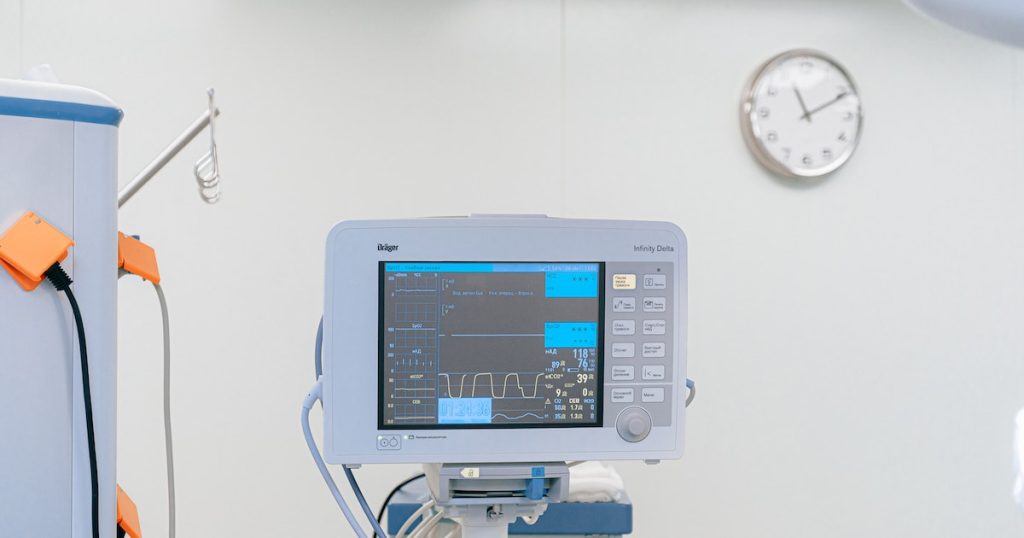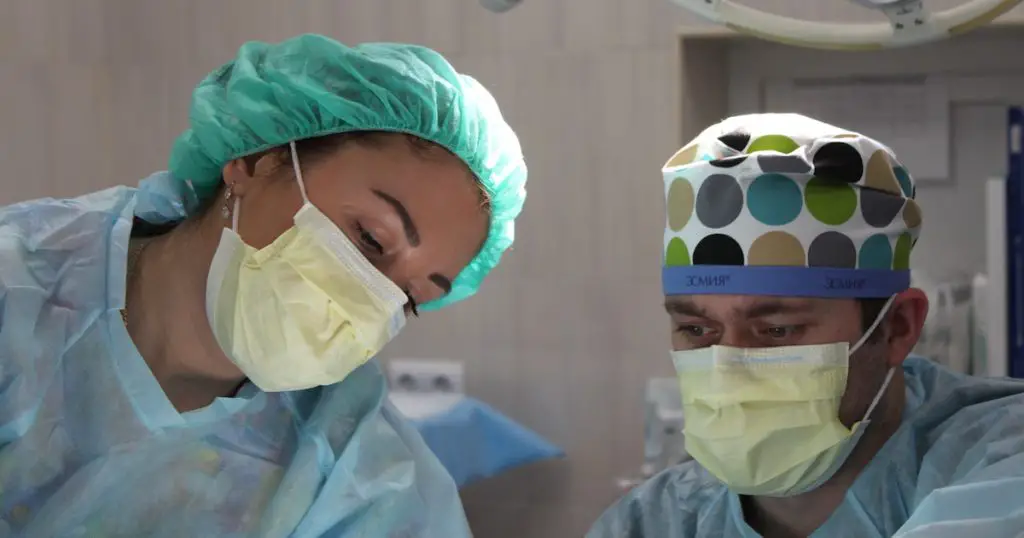Mining has been integral to Prescott’s economic and cultural fabric for generations. Delving into the health effects of mining operations in Prescott gives a holistic view of the price communities pay, often unbeknownst to them, for the resources extracted.

Understanding these health effects not only paves the way for better policies and practices but also fosters community awareness and proactive measures.
Physical Health Effects
The tangible repercussions of mining operations in Prescott manifest most directly in the physical health of its residents. Miners, exposed to dust and hazardous chemicals, often encounter respiratory issues, skin conditions, and musculoskeletal problems. The broader community, while not directly involved in mining activities, isn’t spared either.
Contaminated water sources can lead to digestive disorders, while polluted air might exacerbate asthma and other respiratory ailments. The persistent noise from mining equipment also poses risks of hearing impairment. In essence, the physical health challenges arising from mining are multifaceted, affecting both workers and the wider community.
Respiratory Issues
The inhalation of dust and particulates is an inherent risk for miners. Prolonged exposure can lead to chronic respiratory conditions. Miners often face the risk of developing diseases like silicosis, a lung ailment caused by inhaling silica dust, which is prevalent in mining environments.
According to the World Health Organization, silicosis can lead to disability and even death if not detected and treated promptly.
Another challenge is the limited ventilation in mines, which exacerbates the accumulation of dust. The use of proper respiratory equipment is essential, but even with the best tools, long-term exposure can lead to respiratory complications.
Heavy Metal Poisoning
Mines are abundant sources of minerals, but this also means they have high concentrations of heavy metals like lead and mercury. The Centers for Disease Control and Prevention highlights that even minimal exposure to these heavy metals can lead to severe health complications. Mercury, for instance, can impair neurological functions, while lead exposure can affect almost every organ system.
Long-term impacts of heavy metal exposure include kidney damage, reproductive issues, and even certain cancers. It’s crucial for mining companies to provide protective equipment to shield miners from these dangerous substances.
Hearing Loss
The deafening noise in mining areas, from drilling machines to explosions, poses a significant threat to the auditory health of miners. Chronic exposure to such elevated noise levels can lead to hearing impairments. Studies from the National Institute on Deafness and Other Communication Disorders have established a clear link between occupational noise and hearing loss.
Even with protective measures like earplugs or earmuffs, the persistent exposure over the years can take its toll. Moreover, the danger doesn’t end with hearing loss. Prolonged exposure to high-decibel environments can also lead to stress and sleep disturbances.
Musculoskeletal Disorders

Mining demands physical rigor. Lifting heavy objects, handling machinery, and even the mere act of digging can strain the body. It’s no surprise, then, that musculoskeletal issues are prevalent among miners. Repetitive stress injuries, resulting from performing the same motion repeatedly, can lead to conditions like carpal tunnel syndrome.
Moreover, handling heavy machinery without proper training or equipment can result in severe back strains. Proper ergonomics training and equipment adjustment can help, but the risk remains, given the demanding nature of the job.
Mental and Social Health Effects
Beyond the tangible physical consequences, mining operations in Prescott cast a shadow on the mental and social well-being of its inhabitants. The uncertainty and stress associated with potential health risks, combined with the disruption of community landscapes, can lead to anxiety, depression, and other mental health disorders.
Socially, the divide between mining proponents and opponents can strain community ties, leading to feelings of isolation or alienation. Furthermore, families of miners often grapple with the constant fear for their loved ones’ safety. As such, the psychological and communal fabric of Prescott is intricately tied to the ebbs and flows of its mining narrative.
Stress and Anxiety
Mining is inherently risky. The unpredictable nature of the job, combined with the physical challenges, can induce significant stress and anxiety among workers.
The precariousness of mining, coupled with concerns about job security and finances, exacerbates these feelings. A study published in the Journal of Occupational Health Psychology underscores the high levels of anxiety among miners compared to other professions.
Depression and Isolation
Extended hours underground, away from sunlight and social interaction, can contribute to feelings of isolation. This environment, coupled with the stressors already mentioned, can heighten the risk of depression among miners.
It’s vital for mining communities to provide resources and platforms for miners to discuss their feelings, ensuring their mental well-being is as prioritized as their physical health.
Substance Abuse Trends
Given the high-stress nature of the job, some miners might resort to substances as coping mechanisms. Alcohol and drug abuse trends are concerning issues in many high-stress professions, and mining is no exception.
Providing access to counseling and creating a support system within the community can significantly mitigate these risks.
Environmental Health Effects
The environmental repercussions of mining operations in Prescott ripple out to influence community health on multiple fronts. Prolonged mining activities lead to air and water pollution, introducing hazardous contaminants into the ecosystem.
These pollutants, when inhaled or ingested, can cause a range of health issues from respiratory problems to digestive ailments. Moreover, the disruption of local habitats can lead to the proliferation of disease-carrying vectors, posing additional health threats.
The degradation of natural resources not only imperils the environment but also compromises the very fabric of community well-being, underscoring the interconnectedness of environmental health and human vitality.
Water Contamination
One of the significant environmental impacts of mining is water contamination. Runoffs from mines can introduce hazardous chemicals into local water supplies.
Consuming contaminated water can lead to a host of health issues, from gastrointestinal problems to severe conditions like arsenic poisoning. Reports from the Environmental Protection Agency indicate the need for stringent water quality monitoring around mining areas.

Air Quality Degradation
Mines can release a variety of harmful gases, such as methane and carbon monoxide. These, coupled with dust particles from mining operations, can deteriorate air quality.
This is especially concerning for nearby residents, increasing their risk of respiratory diseases. Advocacy groups like the Clean Air Task Force have called for stricter emission standards for mines to protect community health.
Soil Degradation and Contamination
Mining operations can lead to soil degradation, impacting local agriculture. Heavy metals from mines can leach into the soil, entering the food chain and posing health risks for consumers.
Efforts to reclaim and rehabilitate mining sites are crucial to prevent long-term environmental damage.
Impact on Vulnerable Populations
Mining operations in Prescott have a particularly pronounced effect on the community’s most vulnerable members. Children, the elderly, and those with pre-existing health conditions often bear a disproportionate burden of the associated health risks.
Exposure to pollutants and environmental changes can exacerbate respiratory issues, developmental challenges in children, and complications in older adults. Furthermore, economically disadvantaged populations, with limited access to healthcare and resources, find themselves at heightened risk.
Understanding and addressing the specific needs of these vulnerable groups is paramount in crafting a holistic response to the challenges posed by mining activities.
Children and Youth
Younger individuals are at a heightened risk:
- Developmental health risks due to exposure to contaminants
- Potential disruptions in schooling due to health or economic impacts on families
Elderly Residents
The elderly, with their reduced immunity and potential pre-existing conditions, face:
- Increased sensitivity to changes in air and water quality
- Challenges accessing healthcare and support
Indigenous and Marginalized Communities
Historically, indigenous and marginalized groups have borne the brunt of the environmental and health consequences of mining. They face:
- Disproportionate health impacts due to proximity to mining sites
- Economic and social challenges, including potential land rights disputes
Mitigation and Prevention
In the face of the health effects from mining operations in Prescott, proactive steps in mitigation and prevention are crucial. Leveraging advancements in technology and strict regulatory frameworks, the community can significantly reduce the adverse impacts.
Regular health monitoring, community awareness programs, and sustainable mining practices can act as strong preventive measures. Additionally, fostering collaboration between miners, residents, and local authorities can lead to a more informed and vigilant populace, ensuring that Prescott’s mining legacy flourishes without compromising the health of its people.
Modern Mining Technologies
Technological advancements have reduced the release of dust and pollutants from mining operations. Moreover, safety enhancements, from protective gear to advanced machinery, have made mining less hazardous. Leading industry platforms like the Mining Safety and Health Administration regularly release guidelines to incorporate these technologies efficiently.
Monitoring and reporting health concerns in real time can prevent larger outbreaks. Accessible healthcare, regular check-ups, and health education campaigns can ensure that the community remains vigilant and informed.
Regulation and Oversight

A robust regulatory framework is paramount to safeguarding both miners and the community at large. Governments, along with international bodies, have set up stringent standards for mining operations.
Existing laws demand regular inspections, emissions controls, and employee health checks. The efficacy of these regulations often comes under scrutiny, especially when mining accidents or environmental crises emerge.
Thus, there’s an ongoing need to review, adapt, and evolve these laws to meet contemporary challenges. For instance, the International Council on Mining and Metals emphasizes the incorporation of sustainable practices and ensures member companies adhere to globally recognized standards.
Furthermore, community activism plays a pivotal role in keeping the mining industry in check. Local and global NGOs, empowered by data and backed by concerned citizens, ensure that mining companies remain accountable for their health and environmental footprint.
Future Prospects and Challenges
As Prescott navigates the intricate landscape of mining and its associated health implications, the horizon brings both promise and predicaments. Innovations in green mining technologies are ushering in an era of more sustainable practices, poised to mitigate some of the longstanding health concerns.
Concurrently, the embrace of health tech, especially telemedicine, offers proactive solutions to address health issues head-on. However, these advancements are not without their challenges.
Achieving seamless stakeholder collaboration and adapting to rapidly evolving technologies requires diligence and foresight. Prescott’s future in mining, while bright, necessitates continuous adaptation and community engagement.
Green Mining Technologies
The push for sustainable and environmentally friendly practices is on the rise. This trend, referred to as green mining, aims to reduce the environmental footprint of mining activities. Technologies that enable the reduction of greenhouse gas emissions, water conservation, and safer waste disposal are under constant development.
As per the World Economic Forum, green mining could redefine the industry’s future, making it more acceptable to communities wary of its environmental and health impacts.
Telemedicine and Health Tech
As technology advances, healthcare solutions are becoming more accessible and sophisticated. Telemedicine, which allows remote consultations with healthcare professionals, could be particularly beneficial for miners and residents in isolated areas.
Wearable health tech gadgets that monitor vital stats can offer real-time insights, ensuring timely interventions. Institutions like the Mayo Clinic have been pioneering these solutions, emphasizing their potential in high-risk professions like mining.
Stakeholder Collaboration
More than ever, there’s a pressing need for collaboration between various stakeholders. Mining companies, governments, local communities, and environmentalists need to come together to chart a sustainable future.
Such collaborations can lead to a more holistic understanding of challenges and the development of innovative solutions. Forums like the United Nations Environment Programme are fostering such dialogues, aiming to bridge gaps and forge partnerships.
FAQs:
In this section, we will be delving into some of the most common inquiries and curiosities that surround our topic.
How does Prescott compare to other mining towns in terms of health effects?
Prescott faces similar challenges as other mining towns, with some unique environmental and socio-economic factors that might intensify or mitigate certain health effects.
Are there any ongoing studies about the health impacts of mining in Prescott?
Several academic and government bodies continuously monitor and study the health implications of mining in Prescott. It’s advisable to consult the latest publications from institutions like the National Institute for Occupational Safety and Health for updated findings.
How can residents protect themselves from the adverse effects of mining operations?
Being informed is the first step. Regular health check-ups, using water filtration systems, and participating in community monitoring initiatives can offer added protection.
What role do governmental agencies play in monitoring and regulating mining activities in Prescott?
Governmental agencies set regulations, conduct inspections, and ensure that mining companies adhere to health and environmental standards. They also provide resources for affected communities and workers.
Are mining companies taking initiatives to reduce the health risks posed to Prescott residents?
Many responsible mining companies have adopted sustainable practices and invested in community health initiatives. However, like any industry, the commitment varies among companies.
Summary
Mining in Prescott, while economically significant, brings forth a myriad of health challenges. From direct physical ailments faced by miners to broader environmental implications affecting the entire community, the concerns are multifaceted.
However, with technological advancements, rigorous regulations, and community vigilance, there’s a path forward to harnessing the benefits of mining while minimizing its health risks. Awareness, combined with proactive measures, can ensure a healthier, prosperous Prescott for all.



Leave a Comment
You must be logged in to post a comment.